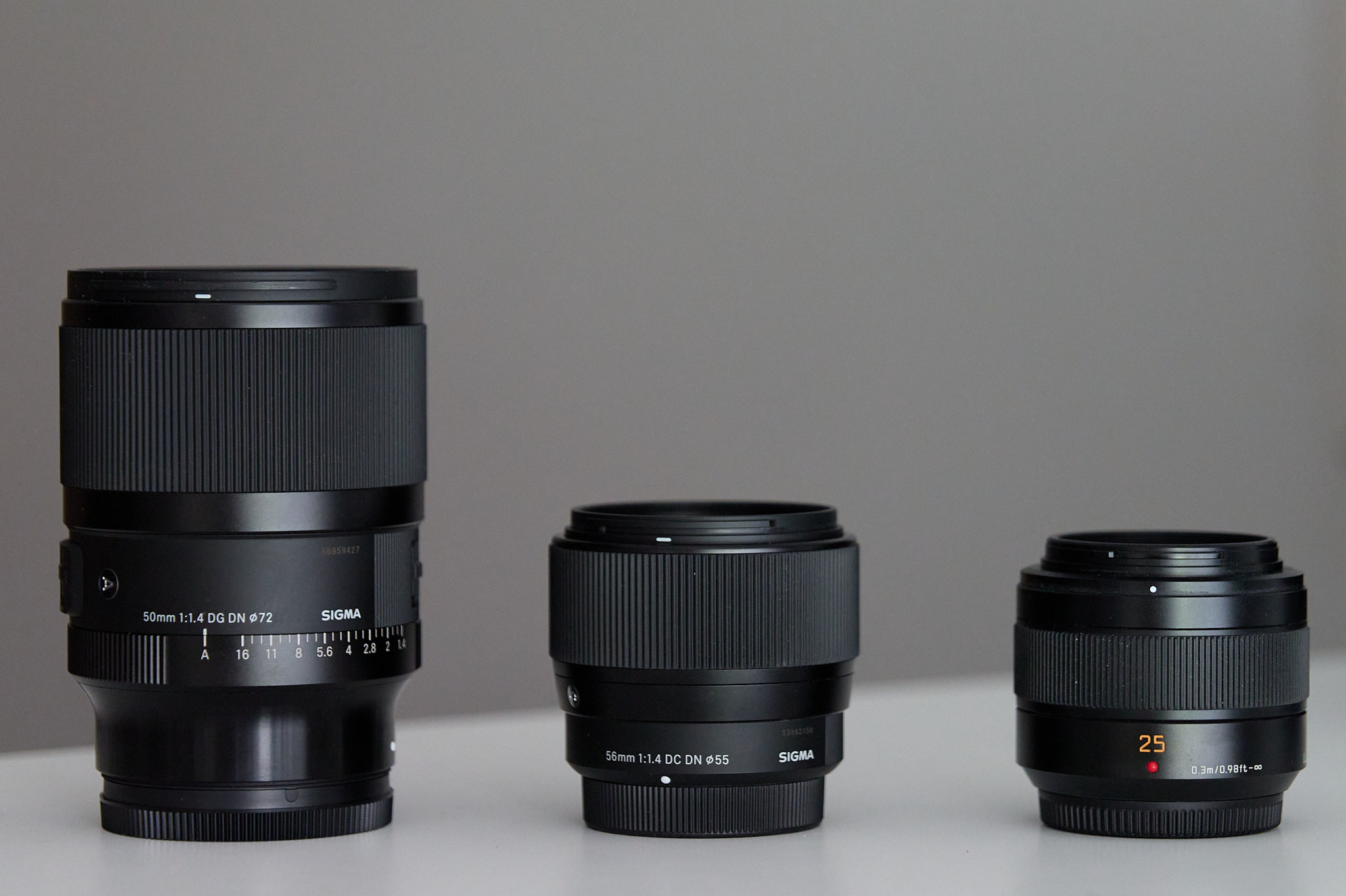April 19, 2025
Why I love the MFT system
I’ve been an amateur photographer since my second year of college, when I bought a Nikon D40 using my first paycheck as a junior software engineer. Since 2019, I’ve been using a Panasonic G9, a Micro Four-Thirds camera.
Since the G9 was originally launched in early 2018, it’s using a 20MP sensor with the older contrast-detect autofocus system, which can be a bit hit or miss, so I was thinking of upgrading to the recently-released Panasonic S1R II, a full-frame camera, so I rented one for the weekend.
Unfortunately, the S1R II body is just a tad shorter and a tad bulkier than the G9 and since the lenses tend to be bigger and heavier, this means that the ergonomics are much worse, at least for my hands.
How bigger are the lenses, you ask?

Which one would you carry in your backpack?
The main characteristics (focal length and aperture) of the first two lenses are pretty much identical, with the exception that the bigger lens targets a sensor four times the size of the MFT sensor. The effect is equivalent with a 2x crop, so we can obtain an equivalent perspective by cropping in the full-frame image:


Can you tell which photo was taken by a 7-year old camera with a crop sensor and which is taken by the state-of-the-art flagship camera? I’d pick the second one, but I’d be wrong.
The other option to get an equivalent perspective1 is to use an MFT lens with half the focal distance of the full-frame lens, which is where the Panasonic Leica 25mm lens comes in:


Obviously, the full-frame lens is able to generate more separation of the subject from the background (aka “bokeh”), but can you tell the difference between a 45MP full-frame sensor and a 20MP sensor? I can’t.
I do get that professional photographers are willing to pay for gear that enables them to work, but I’d argue that most photographers out there are hobbyists like myself, and generally you pick a time and place for your hobby, so some compromises can often be acceptable.
I don’t care about 8K recording, as I’ll most likely never use it, but I do care about the extra bulk generated by the internal active cooling system. I don’t care about razor-thin depth of field, but I do get annoyed if I take a portrait and one eye is in focus and the other one isn’t. I do care about the price, because a better camera won’t generate more business (or any business for that matter!). I do care about the size and weight of the camera and lenses because they are extras that need to fit into my luggage when I go on vacation with my family.
The MFT system checks all these boxes for me: durable bodies with excellent ergonomics and plenty of lenses either cheap, or slightly more expensive, but well-made and rugged enough to withstand rain or sand, and with excellent optics. I do hope that Panasonic and OM DS will keep this system alive for many years to come!
-
Some amount of cropping will still be required because the MFT sensor has a 4:3 aspect ratio, while the full-frame sensor has a 3:2 aspect ratio ↩
